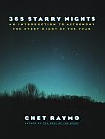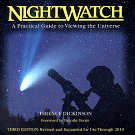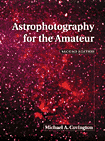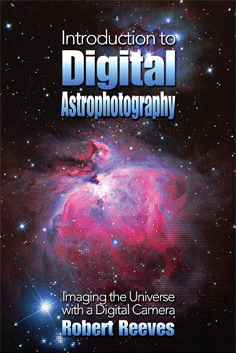 Science Daily: Mars
Science Daily: Mars
- Surprising insights about debris flows on Mars March 14, 2024
- Giant volcano discovered on Mars March 13, 2024
 Science Daily: Uranus
Science Daily: Uranus
- New images reveal what Neptune and Uranus really look like January 5, 2024
- Ringing in the holidays with ringed planet Uranus December 19, 2023
 Science Daily: Pluto
Science Daily: Pluto
- How Pluto got its heart April 15, 2024
- Evidence of geothermal activity within icy dwarf planets February 15, 2024
 Science Daily: Kuiper Belt
Science Daily: Kuiper Belt
- How Pluto got its heart April 15, 2024
- Evidence of geothermal activity within icy dwarf planets February 15, 2024
Astronomy Books
I have lots of these resources and they are so much easy to access than all the online stuff. Living in New York City, I get two hours of “forced” reading time every day when I ride the subway back and forth to work.
If you are looking for these books, the best option might be to simply borrow them from your local library if you can, or try interlibrary loan if they don’t. Here in NYC, I can get a lot of books via the library since the NYC library system is huge even though my local branch has very little. Even if you are not in a large city, ask your librarian about getting the book through interlibrary loan. It’s definitely the cheapest way to get your hands on the book (and you’ll be helping the libraries to continue to justify their funding).
General/Introductory
 |
365 Starry Nights by Chet Raymo, copyright © 1982 Prentice-Hall, published by Simon and Schuster. (The link on the book above will take you to skymaps.com, but you should be able to find this book almost anywhere.) This book has a couple of paragraphs for each day of the year and at least one illustration. It slowly works its way around the sky discussing objects which are visible on the date discussed. However, it is not completely about observational astronomy; there is information on all sorts of things. There is a good description of H-R diagrams and what they mean, historical notes related to famous astronomers, stories related to the mythology behind some of the constellations and more. This is a suitable book for young observers, too. |
 |
Nightwatch: A Practical Guide to Viewing the Universe by Terence Dickinson, copyright © 1998 Terence Dickinson. This is a good general introduction to astronomy as a hobby written by a good amateur. Terence Dickinson the the editor of SkyNews, a bi-monthly Canadian astronomy magazine. He starts out with general information on astronomy and covers the basics of backyard astronomy: the constellations, the night sky season-by-season, and more. There is a chapter on equipment, information on viewing tips (e.g., using averted vision), and what those catalogue numbers mean. In addition to the four general seasonal charts, there are 20 more detailed charts to get you started working through the constellations. It was in chapter 11 that I discovered that you could build a simple device (the barn-door tracker) to let you take long-exposure photos with an ordinary 35-mm camera. |
Astrophotography
 |
Astrophotography for the Amateur by Michael Covington is a wonderful book focused squarely on the amateur who wants to learn how to take good astronomical photos. There are chapters on digital processing, including CCD work, but the bulk deals with film photography. |
 |
Wide Field Astrophotography by Robert Reeves is another excellent book on astrophotography which begins with information that beginners (like me) will want. In spite of the later chapters on advanced tools (e.g., Schmidt-cameras), Reeves repeatedly emphasizes what you can do with an ordinary 35-mm camera that you may already have lying around the house. Reeves’ web site has some great information on films and how well suited they are for astrophotography. |
 |
Introduction to Webcam Astrophotography: Imaging the Universe with the amazing, affordable webcam is another good book by Robert Reeves. If you also have Introduction to Digital Astrophotography, you will notice some overlap in content. That is probably unavoidable since certain aspects of digital image capture are the same, and some aspects of astrophotography as the same regards of what tools you are using (things like dressing warm and packing carefully). But while some time is spent on deep-sky imaging, the main focus of this book is on the use of the webcam to take high-resolution lunar and planetary images, a use I can also recommend. Like Reeves, my first attempt to take images of the moon using a Philips ToUCam Pro 740k came out better than anything I had ever managed to do with film. In fact, I’ve tossed out my black-and-white film I was using for lunar photography. If you’re just getting started, this is a useful book in large part because it concentrates the body of knowledge in a single place. There is little here you can’t find on the web, but having it all in once place and well organized can be a big help. |
 |
Introduction to Digital Astrophotography – Imaging the Universe with a Digital Camera is yet another fine book by Robert Reeves. This book focuses on the use of digital cameras, both DSLRs and point-and-shoot types and how their use changes some of the rules-of-thumb used by film photographers. Even if you were never a film astrophotographer, you’ll find plenty of useful information in the book. Reading this made me antsy to get back out and do some more imaging, something that time hadn’t allowed in a while. |
Search
.Archives
- April 2024 (3)
- September 2022 (5)
- April 2022 (1)
- January 2022 (3)
- December 2021 (4)
- September 2021 (3)
- July 2021 (1)
- January 2021 (1)
- November 2020 (2)
- October 2020 (2)
- September 2020 (2)
- August 2020 (5)
- July 2020 (1)
- November 2019 (2)
- September 2019 (1)
- August 2019 (2)
- September 2017 (1)
- August 2017 (1)
- September 2015 (3)
- August 2015 (2)
- June 2015 (5)
- May 2015 (3)
- May 2013 (2)
- January 2013 (1)
- December 2012 (2)
- September 2012 (1)
- June 2012 (1)
- May 2012 (1)
- October 2011 (2)
- September 2011 (2)
- April 2011 (2)
- March 2011 (10)
- January 2011 (8)
- November 2010 (2)
- October 2010 (1)
- September 2010 (3)
- August 2010 (2)
- July 2010 (1)
- June 2010 (1)
- April 2010 (3)
- February 2010 (3)
- January 2010 (3)
- December 2009 (6)
- November 2009 (3)
- October 2009 (7)
- September 2009 (8)
- August 2009 (4)
- July 2009 (1)
- June 2009 (2)
- May 2009 (2)
- April 2009 (7)
- March 2009 (1)
- February 2009 (6)
- January 2009 (4)
- December 2008 (4)
- November 2008 (3)
- October 2008 (11)
- September 2008 (4)
- August 2008 (5)
- July 2008 (5)
- June 2008 (2)
- April 2008 (4)
- March 2008 (18)
- February 2008 (9)
- November 2007 (1)
- October 2007 (3)
- July 2007 (3)
- April 2007 (1)
- March 2007 (6)
- February 2007 (3)
- December 2006 (3)
- October 2006 (4)
- September 2006 (1)
- July 2006 (5)
- May 2006 (10)
- April 2006 (9)
